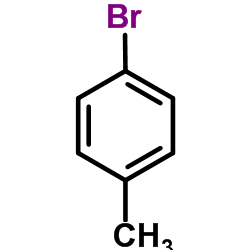Fluorogenic derivatization of aryl halides based on the formation of biphenyl by Suzuki coupling reaction with phenylboronic acid
Naoya Kishikawa, Kimiko Kubo, Sherin Farouk Hammad, Mokhtar Mohamed Mabrouk, Ahmed Habib, Hamed Elfatatry, Kaname Ohyama, Kenichiro Nakashima, Naotaka Kuroda
文献索引:J. Chromatogr. A. 1216(40) , 6873-6, (2009)
全文:HTML全文
摘要
The fluorogenic derivatization method for aryl halide was developed for the first time. This method was based on the formation of fluorescent biphenyl structure by Suzuki coupling reaction between aryl halides and non-fluorescent phenylboronic acid (PBA). We measured the fluorescence spectra of the products obtained by the reaction of p-substituted aryl bromides ( i.e., 4-bromobenzonitrile, 4-bromoanisole, 4-bromobenzoic acid ethyl ester and 4-bromotoluene) with PBA in the presence of palladium (II) acetate as a catalyst. The significant fluorescence at excitation maximum wavelength of 275–290 nm and emission maximum wavelength of 315–350 nm was detected in all the tested aryl bromides. This result demonstrated that non-fluorescent aryl bromides could be converted to the fluorescent biphenyl derivatives by the coupling reaction with non-fluorescent PBA. We tried to determine these aryl bromides by HPLC-fluorescence detection with pre-column derivatization. The aryl bromide derivatives were detected on the chromatogram within 30 min without any interfering peak derived from the reagent blank. The detection limits (S/N = 3) for aryl bromides were 13–157 fmol/injection.
相关化合物
| 结构式 | 名称/CAS号 | 分子式 | 全部文献 |
|---|---|---|---|
 |
对溴甲苯
CAS:106-38-7 |
C7H7Br |
|
Tetragonal Cu2Se nanoflakes: synthesis using selenated propy...
2015-01-14 [Dalton Trans. 44(2) , 725-32, (2014)] |
|
Possible intermediates of Cu(phen)-catalyzed C-O cross-coupl...
2014-08-07 [Dalton Trans. 43(29) , 11410-7, (2014)] |
|
Synthesis of ketones from alpha-oxocarboxylates and aryl bro...
2008-01-01 [Angew. Chem. Int. Ed. Engl. 47(16) , 3043-5, (2008)] |
|
Successful application of microstructured continuous reactor...
[J. Organomet. Chem. 690(16) , 3627-29, (2005)] |
|
Triaryl phosphine-functionalized N-heterocyclic carbene liga...
[Tetrahedron 61(1) , 259-66, (2005)] |